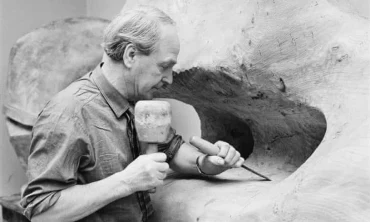
- 357 Lê Hồng Phong, P.2, Q.10, TP.HCM
- Hotline 1: 1900 7060
Hotline 2: (028) 3622 8849
Reading part 2 - Chủ đề: Climate change reveals ancient artefacts in Norway’s glaciers
READING PASSAGE 2
You should spend about 20 minutes on Questions 14-26 which are based on Reading Passage 2 below.
Climate change reveals ancient artefacts in Norway’s glaciers
A
Well above the treeline in Norway’s highest mountains, ancient fields of ice are shrinking as Earth’s climate warms. As the ice has vanished, it has been giving up the treasures it has preserved in cold storage for the last 6,000 years – items such as ancient arrows and skis from Viking Age* traders. And those artefacts have provided archaeologists with some surprising insights into how ancient Norwegians made their livings.
———–
*Viking Age: a period of European history from around 700 CE to around 1050 CE when Scandinavian Vikings migrated throughout Europe by means of trade and warfare
B
Organic materials like textiles and hides are relatively rare finds at archaeological sites. This is because unless they’re protected from the microorganisms that cause decay, they tend no to last long. Extreme cold is one reliable way to keep artefacts relatively fresh for a few thousand years, but once thawed out, these materials experience degradation relatively swiftly.
With climate change shrinking ice cover around the world, glacial archaeologists need to race the clock to find newly revealed artefacts, preserve them, and study them. If something fragile dries and is windblown it might very soon be lost to science, or an arrow might be exposed and then covered again by the next snow and remain well-preserved. The unpredictability means that glacial archaeologists have to be systematic in their approach to fieldwork.
C
Over a nine-year period, a team of archaeologists, which included Lars Pilø of Oppland County Council, Norway, and James Barrett of the McDonald Institute for Archaeological Research, surveyed patches of ice in Oppland, an area of south-central Norway that is home to some of the country’s highest mountains. Reindeer once congregated on these ice patches in the later summer months to escape biting insects, and from the late Stone Age**, hunters followed. In addition, trade routes threaded through the mountain passes of Oppland, linking settlements in Norway to the rest of Europe.
The slow but steady movement of glaciers tends to destroy anything at their bases, so the team focused on stationary patches of ice, mostly above 1,400 metres. That ice is found amid fields of frost-weathered boulders, fallen rocks, and exposed bedrock that for nine months of the year is buried beneath snow.
‘Fieldwork is hard work – hiking with all our equipment, often camping on permafrost – but very rewarding. You’re rescuing the archaeology, bringing the melting ice to wider attention, discovering a unique environmental history and really connecting with the natural environment,’ says Barrett.
—————
**The Stone Age: a period in early history that began about 3.4 million years ago
D
At the edges of the contracting ice patches, archaeologists found more than 2,000 artefacts, which formed a material record that ran from 4,000 BCE to the beginnings of the Renaissance in the 14th century. Many of the artefacts are associated with hunting. Hunters would have easily misplaced arrows and they often discarded broken bows rather than take them all the way home. Other items could have been used by hunters traversing the high mountain passes of Oppland: all-purpose items like tools, skis, and horse tack.
E
Barrett’s team radiocarbon-dated 153 of the artefacts and compared those dates to the timing of major environmental changes in the region – such as periods of cooling or warming – and major social and economic shifts – such as the growth of farming settlements and the spread of international trade networks leading up to the Viking Age. They found that some periods had produced lots of artefacts, which indicates that people had been pretty active in the mountains during those times. But there were few or no signs of activity during other periods.
F
What was surprising, according to Barrett, was the timing of these periods. Oppland’s mountains present daunting terrain and in periods of extreme cold, glaciers could block the higher mountain passes and make travel in the upper reaches of the mountains extremely difficult. Archaeologists assumed people would stick to lower elevations during a time like the Late Antique Little Ice Age, a short period of deeper-than-usual cold from about 536-600 CE. But it turned out that hunters kept regularly venturing into the mountains even when the climate turned cold, based on the amount of stuff they had apparently dropped there.
‘Remarkably, though, the finds from the ice may have continued through this period, perhaps suggesting that the importance of mountain hunting increased to supplement failing agricultural harvests in times of low temperatures,’ says Barrett. A colder turn in the Scandinavian climate would likely have meant widespread crop failures, so more people would have depended on hunting to make up for those losses.
G
Many of the artefacts Barrett’s team recovered date from the beginning of the Viking Age, the 700s through to the 900s CE. Trade networks connecting Scandinavia with Europe and the Middle East were expanding around this time. Although we usually think of ships when we think of Scandinavian expansion, these recent discoveries show that plenty of goods travelled on overland routes, like the mountain passes of Oppland. And growing Norwegian towns, along with export markets, would have created a booming demand for hides to fight off the cold, as well as antlers to make useful things like combs. Business must have been good for hunters.
H
Norway’s mountains are probably still hiding a lot of history – and prehistory – in remote ice patches. When Barrett’s team looked at the dates for their sample of 153 artefacts, they noticed a gap with almost no artefacts from about 3,800 to 2,200 BCE. In fact, archaeological finds from that period are rare all over Norway. The researchers say that could be because many of those artefacts have already disintegrated or are still frozen in the ice. That means archaeologists could be extracting some of those artefacts from retreating ice in years to come.
Questions 14-19
Reading Passage 2 has eight sections, A-H.
Which section contains the following information?
Write the correct number, A-H, in boxes 14-19 on your answer sheet.
14 an explanation for weapons being left behind in the mountains
15 a reference to the physical difficulties involved in an archaeological expedition
16 an explanation of why less food may have been available
17 a reference to the possibility of future archaeological discoveries
18 examples of items that would have been traded
19 a reference to the pressure archaeologists are under to work quickly
Questions 20-22
Complete the summary below.
Choose ONE WORD ONLY from the passage for each answer.
Write your answers in boxes 20-22 on your answer sheet.
Interesting finds at an archaeological site
Organic materials such as animal skins and textiles are not discovered very often at archaeological sites. They have little protection against 20 …………………, which means that they decay relatively quickly. But this is not always the case. If temperatures are low enough, fragile artefacts can be preserved for thousands of years.
A team of archaeologists have been working in the mountains in Oppland in Norway to recover artefacts revealed by shrinking ice cover. In the past, there were trade routes through these mountains and 21 ………………… gathered there in the summer months to avoid being attacked by 22 ………………… on lower ground. The people who used these mountains left things behind and it is those objects that are of interest to archaeologists.
Questions 23 and 24
Choose TWO letters, A-E.
Write the correct letters in boxes 23 and 24 on your answer sheet.
Which TWO of the following statements does the writer make about the discoveries of Barrett’s team?
A Artefacts found in the higher mountain passes were limited to skiing equipment.
B Hunters went into the mountains even during periods of extreme cold.
C The number of artefacts from certain time periods was relatively low.
D Radiocarbon dating of artefacts produced some unreliable results.
E More artefacts were found in Oppland than at any other mountain site.
Questions 25 and 26
Choose TWO letters, A-E.
Write the correct letters in boxes 25 and 26 on your answer sheet.
Which TWO of the following statements does the writer make about the Viking Age?
A Hunters at this time benefited from an increased demand for goods.
B The beginning of the period saw the greatest growth in the wealth of Vikings.
C Vikings did not rely on ships alone to transport goods.
D Norwegian towns at this time attracted traders from around the world.
E Vikings were primarily interested in their trading links with the Middle East.
Answer
14 D
15 C
16 F
17 H
18 G
19 B
20 microorganisms / micro-organisms
21 reindeer
22 insects
23&24 B, C
25&26 A, C
THƯ VIỆN LIÊN QUAN

Reading là một trong bốn phần thi bắt buộc của bài thi IELTS, đây cũng được xem là phần thi thử thách nhất để chinh phục được band điểm cao. Hãy...

Bài viết cung cấp cho đọc giả Bài tập Reading part 3 - Chủ đề: Why fairy tales are really scary tales - Có đáp án

Bài viết cung cấp cho đọc giả Bài tập Reading part 2 - Chủ đề: The Desolenator: producing clean water - Có đáp án

Bài viết cung cấp cho đọc giả Bài tập Reading part 1 - Chủ đề: Henry Moore (1898-1986) - Có đáp án
Hoặc gọi ngay cho chúng tôi:
1900 7060
 | Chính sách bảo mật thông tin | Hình thức thanh toán | Quy định chung
| Chính sách bảo mật thông tin | Hình thức thanh toán | Quy định chung
Giấy chứng nhận đăng ký doanh nghiệp số 0310635296 do Sở Kế hoạch và Đầu tư TPHCM cấp.
Giấy Phép hoạt động trung tâm ngoại ngữ số 3068/QĐ-GDĐT-TC do Sở Giáo Dục và Đào Tạo TPHCM cấp